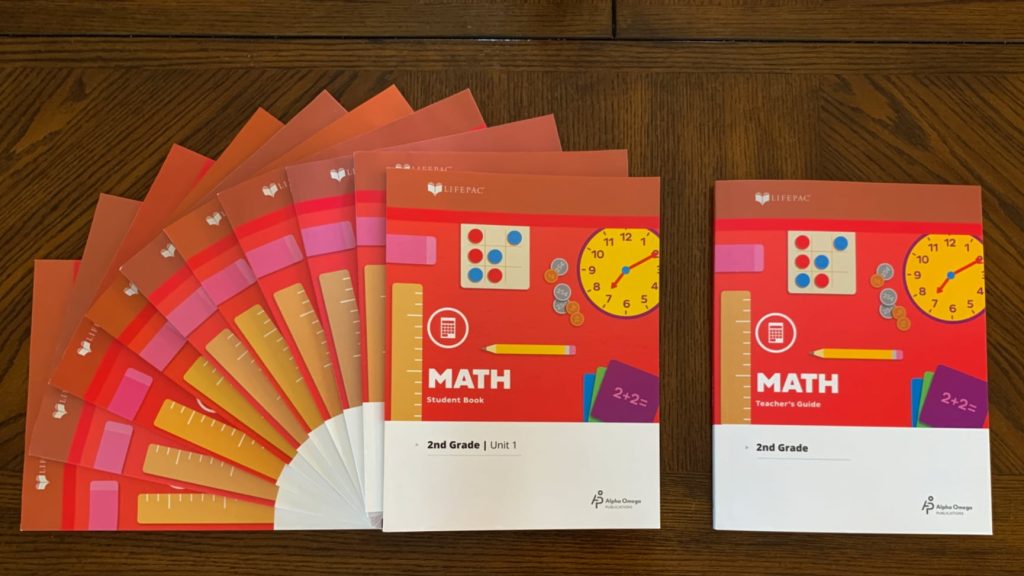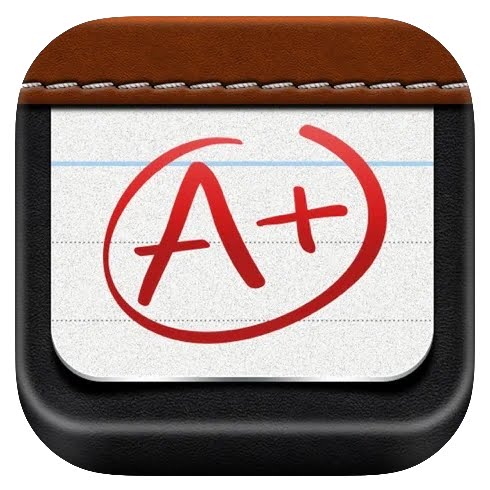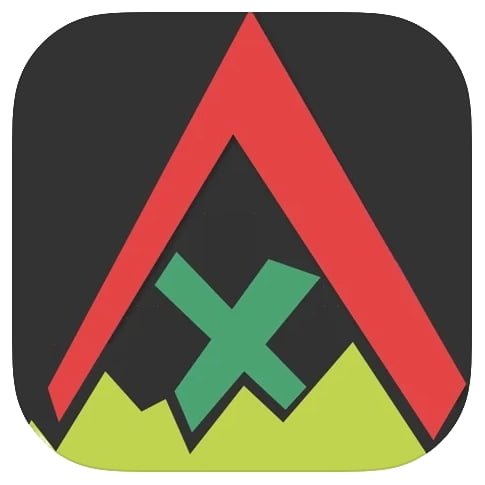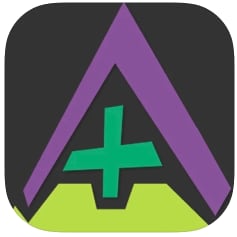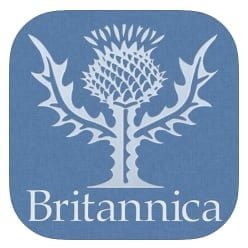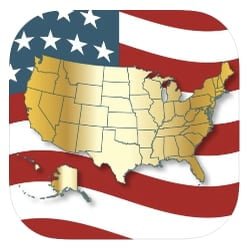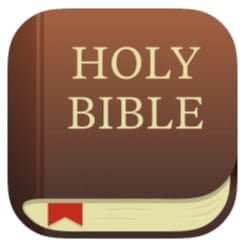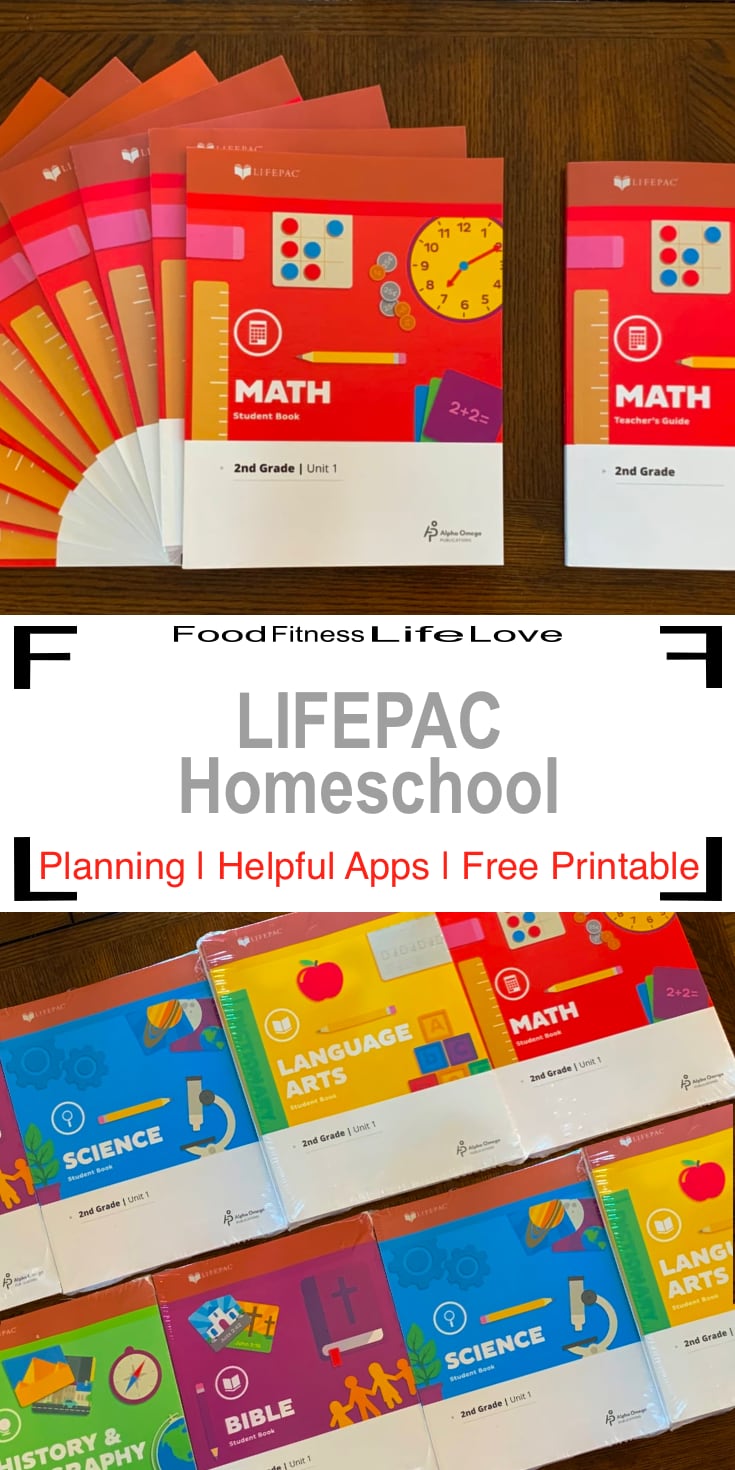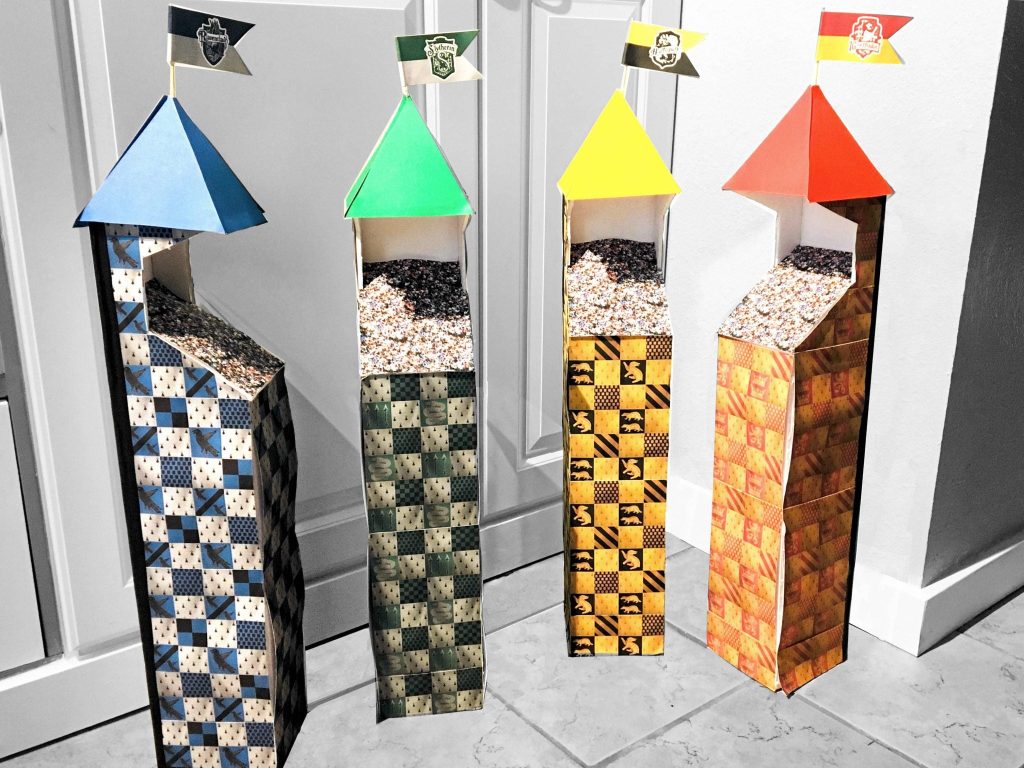A look at LifePac homeschool curriculum, transitioning to homeschool, planning, helpful apps, and a free printable.
UPDATE!! We’ve finished our first year of homeschool, and I’ve added one more tip to the end of the post.
What Comes with LifePac

We’ve been using LifePac homeschool curriculum for a while now, and I’m excited to give you an update. Honestly, I thought I’d be giving this update sooner, but life happens. It’s been nine months since we started using the LifePac homeschool curriculum. We’ve taken some breaks in the fall, winter, and spring, so we’ve finished eight months of curriculum. Overall, homeschool has gone really well for our family. We enjoy the flexibility, and my husband and I are amazed at how much the kids are learning. The first couple months we had a few bumps to work out as we made our transition. But now we’ve found our groove, and our days run smoothly. If you’re curious about why we chose to homeschool with LifePac Curriculum, check out my previous post, Best Christian Homeschool Curriculum For Us And Others We Considered.
When our LifePac curriculum finally arrived, I was so excited. When you order complete grade sets, each set arrives in a large box. Inside the box, there are five subject boxes. These subject boxes contain ten worktexts for each subject and the teacher’s guide. Each worktext book is designed to be about 4 weeks of work, so the complete set contains about 10 months of curriculum.
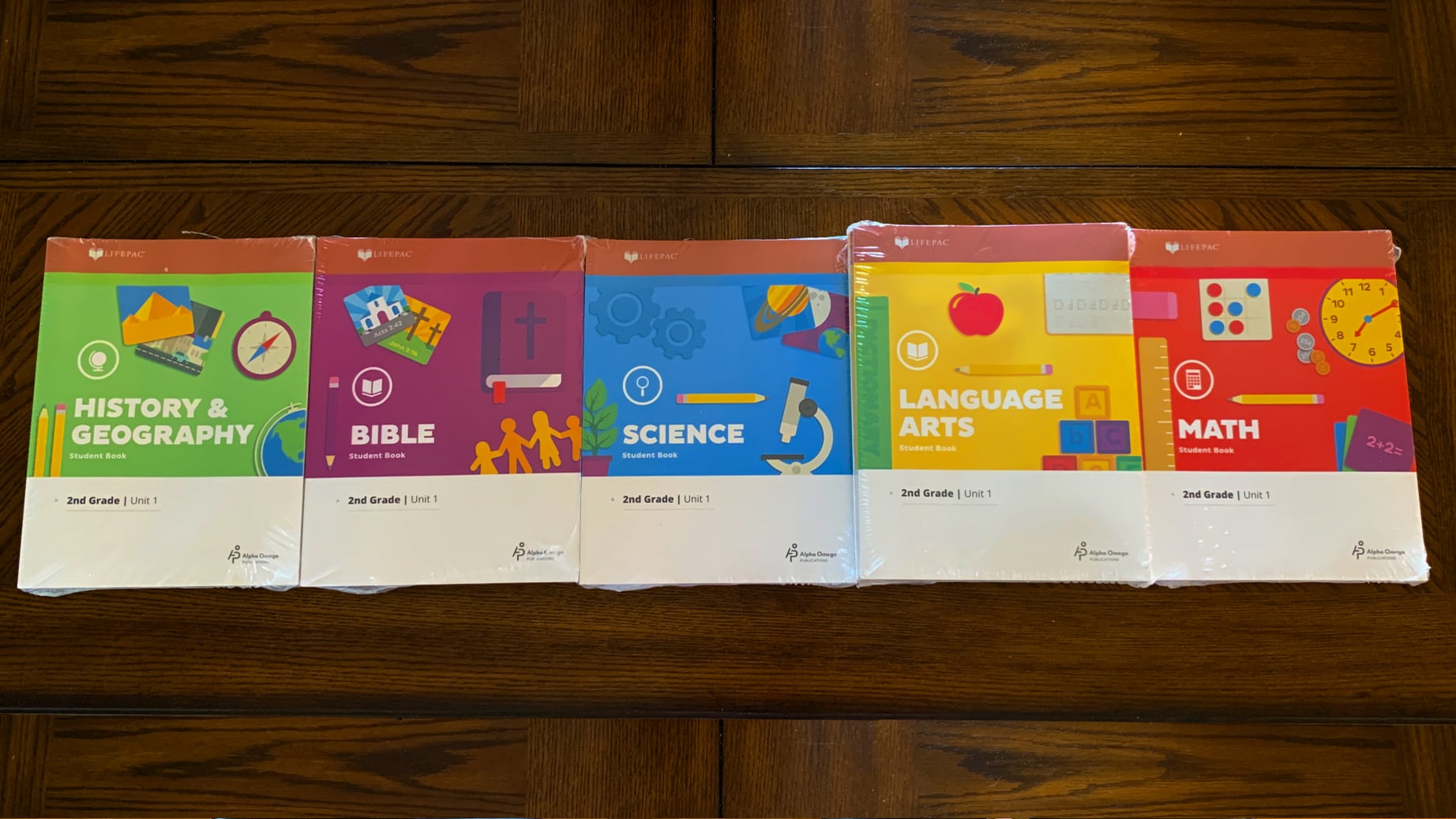
The teacher’s guide is a valuable tool. The beginning of each guide contains: an overview of the subject’s scope and sequence, teacher hints and studying techniques, and teaching supplements. The remainer of the book is divided into units. For each unit (one worktext), there are teacher notes with a list of required and suggested materials, additional learning activity suggestions, and answer keys for all the worktext questions. Sometimes, there are also additional review worksheets that can be copied or pulled out of the book. Finally, the teacher guide also includes an alternate LifePac test for each unit.
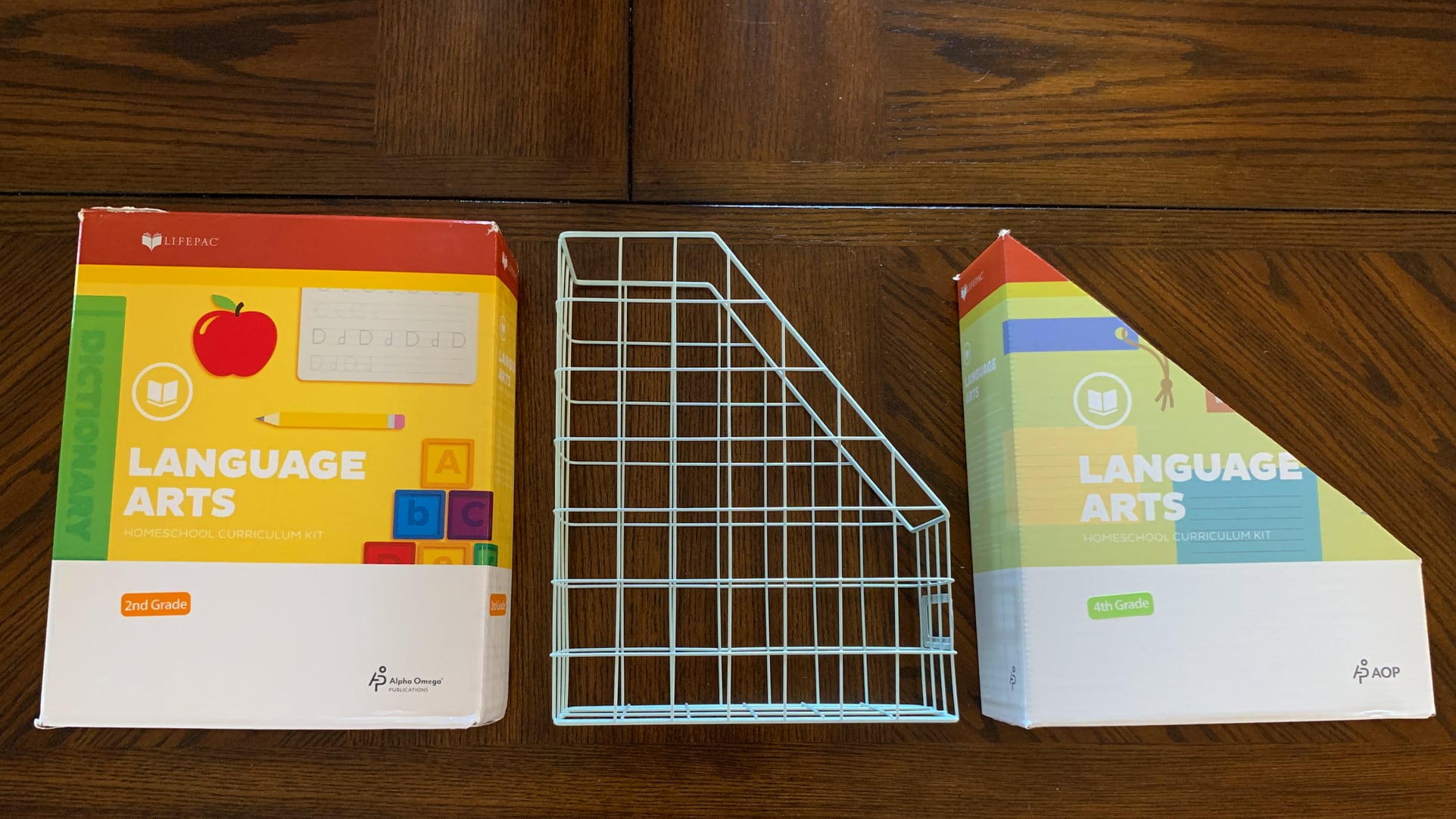
Setting Up Our Classroom
As this is our first time homeschooling, I did not have a classroom set up. Once all of our books arrived, I was very excited to get organized. My goal was to be able to see and access all the books easily. The subject boxes the worktexts arrive in were the perfect tool for this. There was no need to go out and buy anything new. I simply cut some of the boxes (above left) into the shape of a magazine holder (above right) using a utility knife.
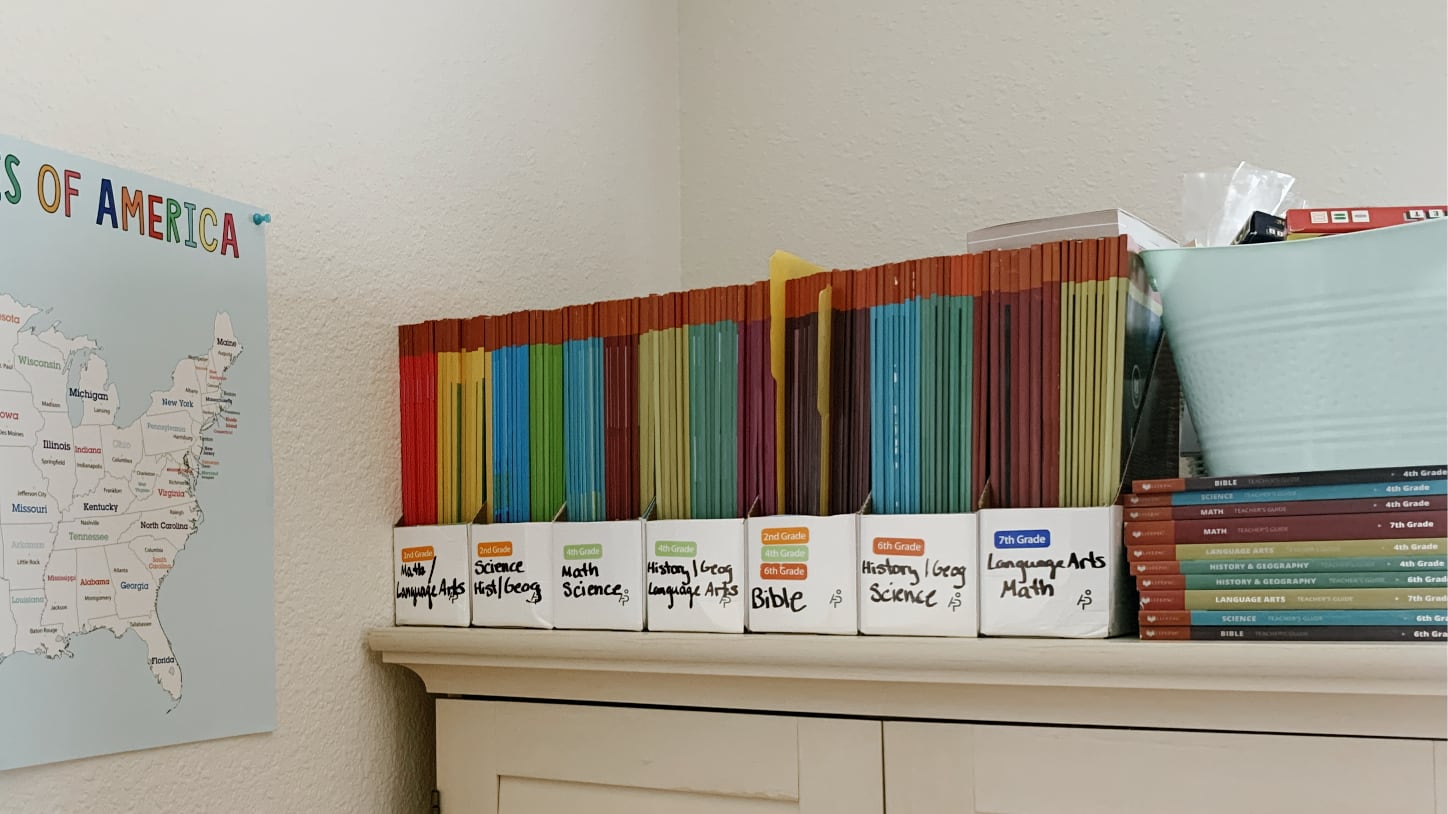

After cutting the boxes, I labeled them with the subjects. And, the boxes came with the grade label stickers, so I just reused them. My teacher guides are on the side, so I can easily grab them when it’s time to grade. We have a hanging file rack on the wall. Each girl has a cubby in the rack which holds their current workbooks and school planner. When it comes time to plan the next month’s curriculum, I simply grab the books out of my homemade organizers.
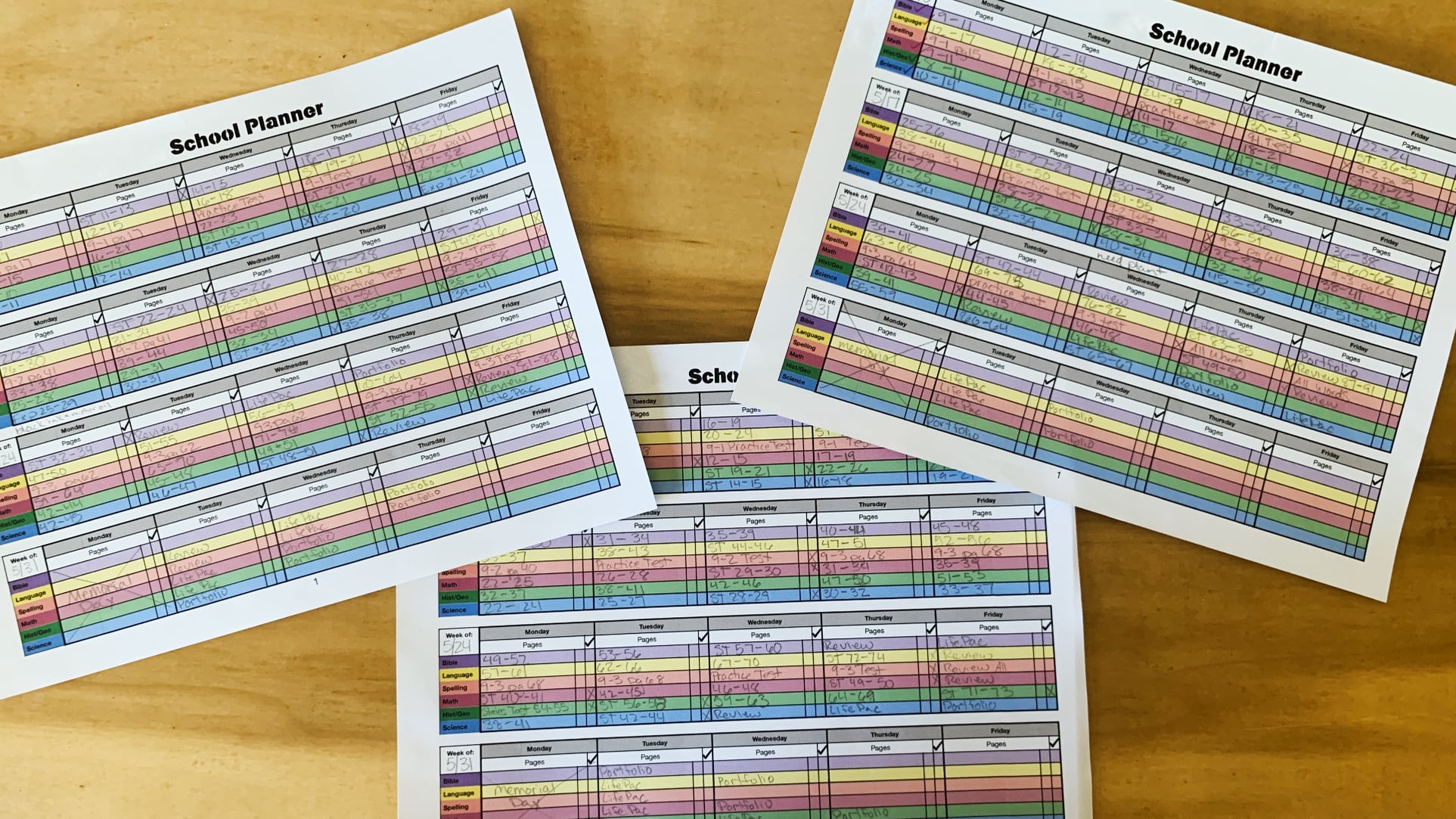
Preparing to Homeschool with LifePac
With the LifePac curriculum all organized, it was time to get familiar with the worktexts and start planning our first month of school. When you order a complete grade set, you also receive an additional booklet called “A Parent’s Guide to Mastering LifePac.” This is a very valuable tool, and I recommend reading it if you haven’t taught homeschool with LifePac before. It explains how the curriculum works, gives suggestions for grading and record keeping and other helpful tips.
After reading the parent’s guide, I familiarized myself with the kids workbooks. Each worktext is divided into 3-5 sections. Each section ends in a self test. These help the kids check-in and see if they are understanding what they’ve learned so far in the book. In the middle of the worktext is the LifePac test. This is the final test for the book. Make sure you remove the LifePac test, and save it until your student has finished the worktext.

All the worktexts vary in size. In order to make sure all the books are finished in four weeks, I followed the suggestions from Alpha Omega Publishing. All you need to do is divide the total number of pages in the book by 15. This will give you the approximate number of pages that need be completed each day. I use this number to help me make our monthly lesson plan. I look though the books as I’m planning and adjust the page numbers as necessary. For example, I make sure I’m not breaking up a science experiment in the middle. I also make sure self tests get their own day so the kids have time to review beforehand. Lastly, I include a full review day in the plan before each LifePac (final) test.
We often finish the workbooks in about three and a half weeks, but it varies with each book. The teacher’s guide comes with a sample lesson planner, but I ended up making my own. (This is actually my second version) The first column for each day is where I write in the day’s pages to be finished. The second column is for the kids to check off when they’ve finished the work. I will put an X in the third column (with the check mark √ ) if there is a self test that day. If you like my planner, here’s a PDF version you can download.
Filling Out the School Planner
- Look at the calendar and cross out any holidays you want to take off
- Total Pages / 15 = Number of pages per day
- Put an X in the √ column if there’s a self test
- No extra work on Self Test day (so the kids have time to review first)
- Review Day before LifePac Test Day
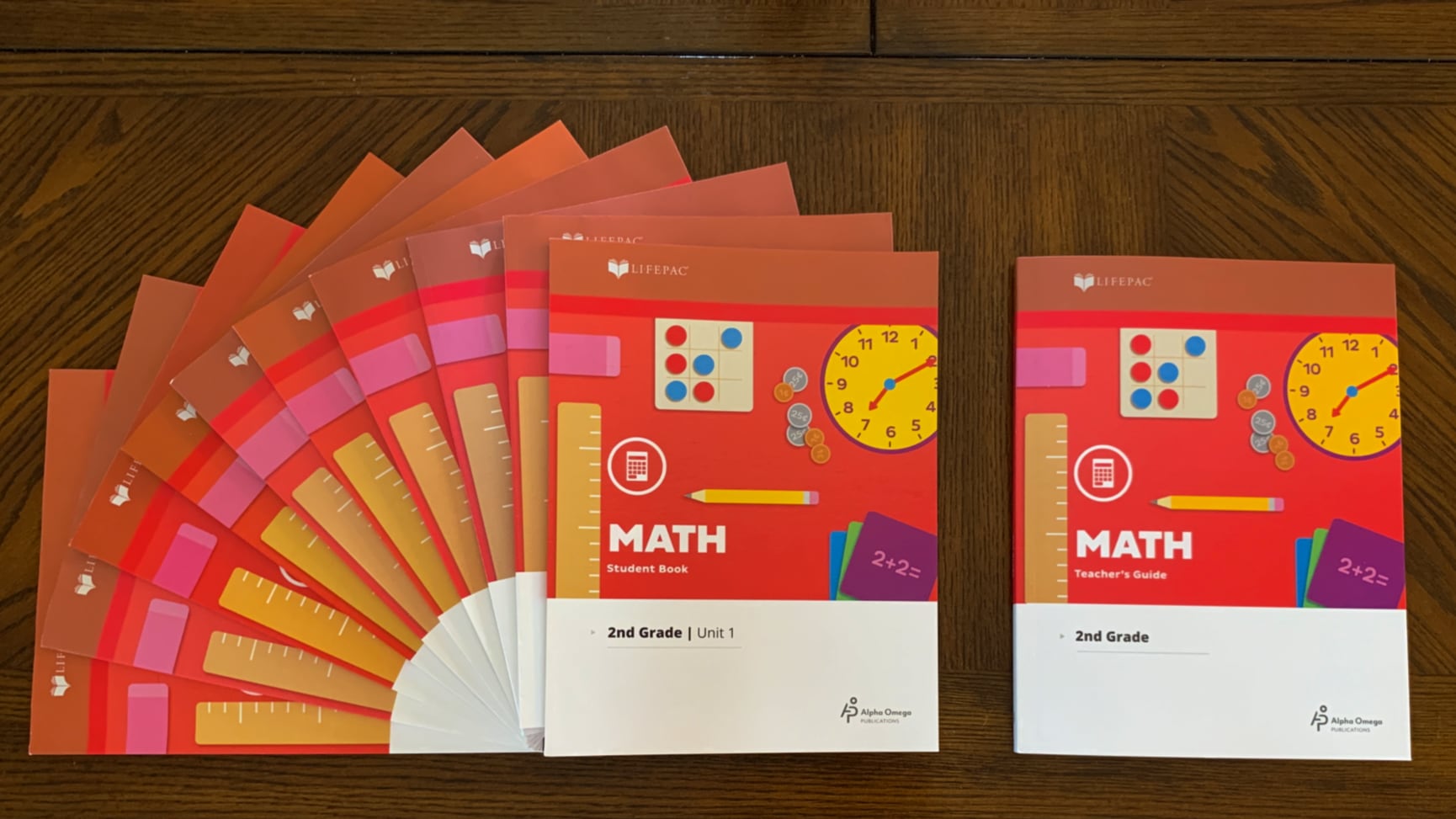
Transitioning to Homeschool and Some Challenges
Once I got the first month of curriculum planned, we were ready to start homeschool. We were very excited. There were some bumps along the way, and the first few months we kept making adjustments. Here were some of our challenges, and how we worked through them.
- We’ve never homeschooled before
- This is kind of obvious, but it’s really important. The kids had to learn to deal with Mom also being their teacher, and so did I. We all had to work on separating theses roles a bit. I also had to learn more about my children and specifically how each of them learns best. This just took some time to work through, and we learned to be patient with each other.
- Jumping into new curriculum with older kids creates its own challenges
- This curriculum, and others too I’m sure, is designed to progress from one year to the next, building on previously learned material. This creates a challenge when you start the curriculum in higher grades and don’t have the foundation provided in previous grades.
- We found this to be the biggest challenge in history and geography. Previously, my kids history and geography instruction was focused on the state we were living in. This year, the curriculum was all about world geography, which they hadn’t studied much before. So, I had to read through their worktexts and figure out if they couldn’t answer the question because it was assumed knowledge and not in the book. Or, on the other hand, if they just weren’t reading closely. Most of the time, the answers weren’t there, and I had to track down resources to help them answer the questions correctly.
- This was only an issue for the first month or two, and then the curriculum built on itself for the remainder of the year.
- This was a minor issue with some of the science curriculum, but the other subjects flowed naturally from what they were learning in public school.
- Not enough time to practice spelling words
- Part of the language arts curriculum is spelling. Every section of each workbook has a new spelling list (usually three per book). There is a spelling test with every self test, and a final LifePac spelling test.
- The first month, I let the kids just work through their workbooks. Doing it this way, they only practiced their spelling words once or twice before the test. This ended in a lot of frustration for all of us because the spelling tests did not go well. After the first test, we realized they needed more time to practice, but we kept forgetting to put in the schedule.
- For the second month, we came up with a new plan that’s working great.
- We made spelling its own subject and added it to school planner. It only takes 10-15 minutes a day.
- The kids practice writing their words every day (unless its test day) in a fun way: bubble letters, pyramid spelling, ABC order, etc. They can pick any way they want and have fun with it.
- I found a spelling app for their tablet that allows us to input their spelling list, and they practice this way too. They can play spelling games and test themselves with the app.
- Finding a way to make review time successful
- The last week of each planned month is when the kids are finishing up their books and taking LifePac tests. We call this test week. As I said before, I plan a day of review for each subject before the final tests. However, we had find the best way for them to successfully review.
- The first month during test week, Grandma happened to be visiting. She lovingly sat down with each kid, flipped through all their workbooks and quizzed them on everything they’d learned. This was great, and the kids did wonderful on all their tests. I tried doing this the second month, but it was hard to help everyone taking different tests at the same time. I needed three of me, and it wasn’t practical.
- So, here’s what we do now. As I’m prepping for the next month of school, I scan all the self tests out of the worktexts and make a review packet. Then, on final review day, the girls do the review packet. Since, they’ve already done these tests and have the answers in their workbooks, they grade the packets by themselves. Then, any questions they miss, they go back and review that area again. I can help them with the extra reviewing if needed, and I have more time to help everyone.
Apps We Find Helpful
The LifePac worktexts have been a really great tool for schooling. They are half textbook, teaching new information, and half workbook, so the kids can practice what they’re learning. Sometimes, research and reports are part of the workbook sections. As a first time homeschool teacher, I have not accumulated a lot of reference materials for the kids. So, I decided to use what we have. We used iPads to supplement the worktexts. Some of these apps we use are purely for reference, while others are extra practice for when the kids finish their schoolwork quickly. Here’s some of our favorite apps (with links to the Apple App Store):
How Much Time Do the Kids Spend Doing School?
When I first started looking into homeschool for my kids, one of my questions was “How much time does it take?” You might be wondering the same thing, so I’ll share what our school day typically looks like. We start school about 8:30, and we’re usually done by 1:00. This includes a recess/snack time and lunch. Often, the kids are done before lunch. Days with lots of reading and new vocabulary take longer. The days where they are taking multiple self tests are pretty short. During the last week of the month, test week, the school day gets shorter and shorter as they finish up the month’s books. So, on average, it’s about four hours of school work each day.

How Much Time Does Teaching Take?
So, that’s how much time the kids are working, but you might be wondering how much time I spend on school. When researching homeschool options, one of things I liked about LifePac is that it’s student directed. I mistakingly thought this meant they could do it by themselves. I don’t have to spend all my time teaching the kids because most of the learning comes from the text of the books. However, I spend a lot of time helping them when they don’t understand, encouraging them to read more closely, and walking them through new concepts.
With three kids, in three grades, they are all learning different things. They don’t usually need help at the same time, so I spend a lot of individual time with them. I also choose to grade their workbooks as soon as they finish. That way they can make corrections while it’s still fresh in their minds. My goal is that by the end of the day, they will have a clear understanding of all the new information. So, for the four hours of school, I would say half my time is helping the kids and grading, and half my time I can get other things done.
How Much Time Does Planning Take?
The last part of homeschool that takes my time is planning. I plan school one month at a time. That is, one set of worktexts at a time. The kids test week is my planning week. I get out the next set of books and fill out the next month’s planners. I also check the teacher’s guide, and make note of any required materials I need to gather. Next, I pull all the LifePac tests out of the center of the worktexts, staple them together, and put them in a folder for the end of the month. Lastly, I copy all the self tests from the workbooks to make review packets. If there are any additional review pages in the teacher’s guide, I will add these to the review packets. This planning takes me four to five hours.
One Last Tip!! Don’t throw away the workbooks!!
We’ve finished our first year of homeschool with LifePac, and I wanted to share one last tip with you. Don’t throw away the workbooks. I’m not a minimalist, although that sounds really nice. I don’t, however, like clutter. And, throughout the year, I was really tempted to get rid of the kids workbooks as they finished up each month. As the pile of finished books got taller and taller, I wondered if they would ever look at them again. We’ll I’m happy that I never went through with it, and here’s why. For almost all the subjects, in all three grades, the tenth and final workbook was a review of the whole year. As the kids worked through their final books, the lessons actually sent them back to specific sections in the finished workbooks for review. So, save all the finished workbooks until you’re finished with the full year’s curriculum.
Trying to decide which curriculum is best for your family? Check out This Post with others options we considered.


